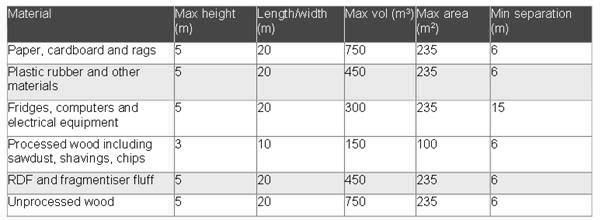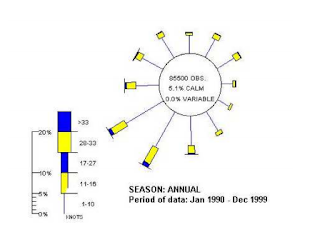 Southwest
Environmental Limited
Southwest
Environmental Limited Southwest
Environmental Limited
Southwest
Environmental Limited| London |
| 02076 920 670 |
| Exeter |
| 01392 927 961 |
| Manchester |
| 01612 970 026 |
| Bristol |
| 01173 270 092 |
Whether consultants are not providing enough detail, or whether the EA are being overtly meticulous is unclear, but a very large proportion of Fire Prevention Plans do not pass, muster on assessment leading to returned applications. This can cost weeks in delays.
So what sort of information goes in to a Environmental Permit Fire Prevention Plan
Fires involving combustible materials can cause significant harm to people and the environment due to:
We produce Environmental Permit Fire Prevention Plans that deal with environmental damage prevention and mitigation they do not cover risk to workers or site users. Good guides to read are:
You can
identify the potential ignition sources in your premises by looking for possible
sources of heat which could get hot enough to ignite material found in your
premises. These sources could include:

For Example:
The maximum
permitted daily throughput is 500 tons. This is a figure included within
compliance documentation to create room for growth. Actual daily throughput of
wastes at the time of writing is likely to be less than 100 tons.
The water used to extinguish a fire often runs off site, or perhaps in to a stream or river and causes pollution. You have to tell the EA or Natural Resources Wales how you intend to stop this happening. Read more about Fire Water Management Plans.
This might include simple measure such as drain covers, but also might include large capital works if necessary. You will have to specify Temporary Contingency Measures if you feel that current systems will not cope with fire water produced during a incident.
This needs to be included within the report, but in authors opinion the fire fighting technique should be left to the Fire rescue services discretion after all who are we to tell them how to do there job!
Pile should be managed so that large volumes of waste do not accumulate on site, as this will increase the impact of a fire, although it may not increase the likelihood.
Below is a summary of the FFP Update, as a response to the consultation held in February - March 2016:
We recently carried out a survey inviting operators to submit the costs
involved in implementing the requirements of the FPP guidance. Many thanks again
to those who responded. The information provided is to be used to assess the
costs and/or benefits of the changes we are proposing to make to the guidance.
It is now a requirement for regulators to carry out economic impact assessment
of any changes such as the FPP guidance.
We have now met with the DEFRA economists who are assisting us with this
assessment, and they have provided us with a timetable for when it will be
completed. Due to the complexities and range of variables involved, we will have
to deliver this by a phased approach. We have been advised that it may take
approximately 3 months to complete; longer than originally anticipated. We
intend to publish the FPP guidance after scoping the first stage of this
qualitative assessment.
We have discussed this with the Regulatory Policy Committee (which will be
scrutinising the analysis), and it was agreed that the approach we are taking
with this is the right one and will ensure we produce a robust and accurate
assessment. We will keep you updated on this as it progresses.
Since July 2015 we have received a total of 237 FPPs. So far 82 (35%) of these plans have been accepted and 155 (65%) have been rejected. The quality of plans is improving and the acceptance rate has increased from its initial level of less than 10%.
We spoke to the Director of a consultancy who has had a number of their Fire
Prevention Plans approved on first time of submission. We asked them for their
top tips for getting your plan approved:
• Understanding that the officer reviewing the plan may not have been to site,
so presenting the plan in a logical order can really help. Following the order
of the guidance makes it clearer and easier to find important information.
• Work your way through the guidance and make sure your plan answers any
questions in the guidance
• Make use of any records or certificates you may already have on site, such as
maintenance schedules and electronics certificates
• Make sure that you understand the fire risks your site poses and that you have
the right measures in place to reduce those risks. For some sites this might be
a £30 hose pipe for others it might mean changes to infrastructure or different
equipment like a thermal camera to detect surface fires.
• Site plans - you need to have every point covered on the site plan guidance,
otherwise it will be rejected, regardless of how insignificant it might seem for
an individual site. For example, minor points like adding where the hydrants are
outside the site - or alternatively adding into the site plan information key
that there are no hydrants outside the site.
Waste teams in Greater Manchester Merseyside and Cheshire (GMMC) have started
auditing sites to assess compliance with approved FPPs. Other areas across the
country will begin to do the same.
We spoke with Karen Henson an Environment Officer in GMMC who has been
undertaking these audits with her colleague Claire Hayter, to get an idea of
what you can expect when compliance is checked at your site. Karen highlighted
some of the main areas when assessing compliance with an FPP:
• Paperwork & Records – Maintenance schedules, Daily Fire checks, Staff
Training, transfer notes, stock rotation, location and site plans
• Procedures - Waste Treatment, Waste acceptance, ignition sources, dust
management, integrity of infrastructure.
• Prevention- Pile sizes and distances checked and measured, detection systems,
fire walls, suppression system, site security
• Emergency Response - Containment, disposal of waste, fire fighting equipment,
water supply,
A compliance assessment may not be limited to these areas but it gives a good
indication of what an assessment may comprise of.
Karen also added that:
"It is important that you are implementing what is written in the FPP to manage
fire risk at your site. If circumstances or procedures have changed on site then
you should ensure that your FPP is updated to reflect this and resubmitted to
the Environment Agency."
For a PDF Document as released by the EA please click link below:
Recent policy changes have resulted in the need for the majority of waste sites to produce and maintain a fire prevention plan, for their environmental permit.
.png) A fire prevention plan sets out the site
specific requirements for the storage of wastes in line with the
relevant guidance. There are requirements for stack spacing sand fire
rescue service access.
A fire prevention plan sets out the site
specific requirements for the storage of wastes in line with the
relevant guidance. There are requirements for stack spacing sand fire
rescue service access.
When a fire is extinguished it is often the case that large volume of
fire water run off the site and on to surround land, or perhaps in to
rivers. The fire prevention plan must set out measures that can be used
to prevent this happening.
These new requirement for fire prevention plans are applied regardless of past performance, and are being requested more and more often during environmental permit applications of any type.
.png) It is important that the Fire Prevention Plan
considers down wind receptors. Use of a
wind rose from the Met Office can help prioritise which receptors to
consider.
It is important that the Fire Prevention Plan
considers down wind receptors. Use of a
wind rose from the Met Office can help prioritise which receptors to
consider.
Another huge consideration is drainage. You may have to make large scale
alterations to your on site drainage systems to ensure that they can be
isolated in case of a fire.
There are various documents on designing surface water drainage systems
to account for emergency fire water and the CIRIA guidance is the most
comprehensive of all.
.png)
The content requirement for a fire prevention plan can be considerable, especially during a bespoke permit application. The fire prevention plans produced by SWEL are for environmental protect matters only and do not deal with health and safety of workers or members of the public.